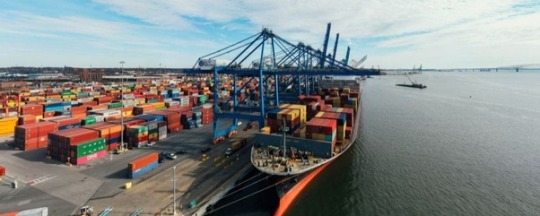Text
What are some of the impacts of floating structures to the marine environment?
Floating structures offer potential benefits like renewable energy generation and increased living space, they can also have various impacts on the marine environment. Here are some key points to consider:

1] Potential positive impacts:
Adaptability to rising sea levels: Since floating structures can adapt to rising sea levels unlike fixed structures, expensive modifications required to fixed structures to adjust to changes in sea level and corresponding carbon footprint can be avoided.
Sustainable “Land” creation: In bustling coastal cities such as Mumbai, the creation of land involves reclamation which in turn means dredging at some other location. Both dredging and reclamation have significant and non-reversible impacts on marine life (flora & fauna). Further, the marine environment is also impacted such as changes in current flows and strengths that impact existing marine facilities. Using floating structures to create artificial “land” can overcome these issues.
Relocation Ability: Unlike fixed structures, floating structures can be relocated to different locations depending on business case or project requirements.
Floating windfarms: Noise from windfarms on land can impact the quality of life for populations in nearby locations. Floating wind farms that can be located further away from population centres can avoid this situation.
Floating Data Centres: Floating data centres have a lower carbon footprint as surrounding water can be used for cooling purposes thereby reducing energy consumption.
Habitat creation: In some cases, floating structures can create new habitats for certain marine organisms, such as barnacles and mussels, that colonize the submerged parts of the floating structure.
Renewable energy: Floating structures can be used to support offshore wind farms and other renewable energy sources, reducing reliance on fossil fuels and their associated environmental impacts.
2] Potential negative impacts:
2.1) Physical impact:
Habitat disruption: Floating structures have the potential to cast shadows, decrease light penetration, and impact the growth of underwater plants and organisms that utilize photosynthesis.
Sedimentation: Structures have the potential to alter water flow patterns, resulting in increased sedimentation in certain areas, which could potentially overtake benthic organisms and have an impact on delicate ecosystems. However, reclamation has much more serious impacts as compared to floating structures.
Collision risks: Floating structures can create collision risks for marine animals, such as fish, whales, and sea turtles, depending on their size and location.
2.2) Chemical impact:
Pollution: Accidental discharges from offshore structures, such as antifouling paints, lubricants, and sewage, from drilling platforms can pollute the surrounding water, harming marine life. However, floating structures are designed and built to Classification Society Rules and need to comply to MARPOL Regulations to prevent marine pollution.
Noise pollution: Construction and operation of industrial floating structures can generate noise that can disrupt the communication and behaviour of marine animals.
2.3) Biological impact:
Introduction of invasive species: Structures can be a stepping stone for invasive species to establish themselves in new areas, which can disrupt local ecosystems.
Artificial reefs: Structures can attract certain fish species, but they may not offer the same ecological complexity and functionality as natural reefs.
Overall, the impact of floating structures on the marine environment depends on various factors, including the size, type, location, and operation of the structure. Careful planning, environmental impact assessments, and mitigation measures are crucial to minimize negative impacts and maximize potential benefits.
Here are some additional points to consider:
For floating structures that have long-term ecological impacts, more studies are needed to fully understand their potential consequences, as research is still ongoing.
Implementing sustainable practices, such as using eco-friendly materials and adopting responsible waste management strategies, can help minimize the environmental footprint of floating structures.
It's important to weigh both the potential benefits and drawbacks of floating structures when considering their development and implementation in the marine environment.
0 notes